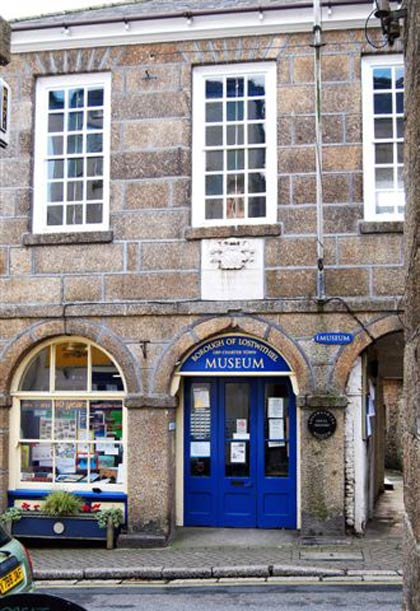Lostwithiel in Cornwall | Lostwithiel Museum Cornwall
Lostwithiel
Cornwall Online | Looe| Talland Bay | Polperro | Polruan | Fowey | Lostwithiel | Mevagissey | Whitsandbay & The Rame Peninsula | Kingsand | Cawsand | Mount Edgecumbe Country Park | Torpoint | St Germans | Saltash | Liskeard | Siblyback Lake - Water Park | Minions - Bodmin Moor | St Neot | St Cleer | Callington | Gunnislake | Calstock | Cardinham Woods -Walking & Cycle Trails | Launceston | Plymouth

Text by Barbara Fraser
Sailing up the Fowey River 100 years ago, a travel writer described the approach to Lostwithiel as 'the loveliest inland scenery in Cornwall'. He wrote 'in the richest pastures of this luxuriant valley stands the old town of Lostwithiel'. Whether one approaches by river, rail or road, this description is still true today.
Situated at the tidal reach of the river Fowey, in a beautiful wooded valley the town lies tucked away just off the A390, a haven of peace and tranquility.
Central in Cornwall, it is within easy reach of the coast and the moors, and well placed for exploring the whole of the county, an ideal centre for a holiday.
Lostwithiel was a 'new town' 800 years ago, founded by the Normans for the export of tin. Then the river was wide and deep, and sea going ships tied up along the quay, loading the tin destined for France and the Mediterranean ports. The town was officially known as 'The Port of Fawi', and soon became the second busiest port on the south coast of England.
The name 'Lostwithiel' comes from two old Cornish words meaning 'the place at the tail end of the woodland', and looking down the valley from Restormel Castle (the home of the Norman lords who built the town) one can see how it came by this name.
In the 13th century Lostwithiel was further developed by the Earls of Cornwall to become the County Capital. It was the centre for the administration of county affairs and the main trading centre for tin.
Earl Edmund called Lostwithiel 'Fairest of Small Cities' and 'Lily of the Valley' and the mediaeval church, bridge and part of the Great Hall (now known as the Duchy Palace) still stand as testimony to its original splendour.
Ironically, tin, the source of the town's wealth, gradually caused its decline. Rubble, carried down by tributaries of the Fowey River from the mines on the moors, silted up the river, preventing big ships from reaching the quay.
A further 600 years of history have left their mark. The town suffered during the Civil War, when it was occupied by Parliamentary soldiers and besieged by Royalists throughout August 1644. Eventually the Parliamentarians were routed, but the town was left shattered, and its people starving. Gradually they recovered, and there was much rebuilding in the late 17th century.
John Betjeman is reputed to have said 'there is history in every stone in Lostwithiel', and this is evident to the interested observer who walks the streets and lanes of the town.
Now it is a peaceful, friendly place; parking is free, and members of staff at the Tourist Information Centre, (in the Community Centre adjacent to the car park) are always ready to help visitors.
Set in this historic background are numerous antique shops specialising in high quality furniture, curios and collectibles, ceramics, Victoriana and glorious junk! Other shops specialise in contemporary arts and crafts, paintings, lace, patchwork. One has to explore the hidden lanes in the town to find some of these.
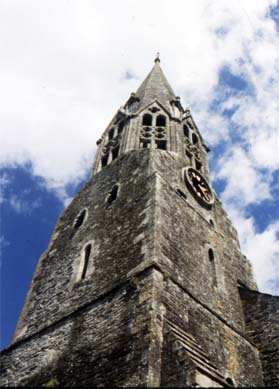
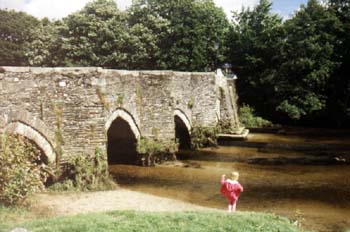 Lostwithiel's mediaeval bridge
Lostwithiel's mediaeval bridge
LOCAL ATTRACTIONS
The Eden Project
The Lost Gardens of Heligan
Wheal Martyn China Clay Museum
Charles Town Shipwreck Museum
Lostwithiel Museum
The museum, housed in the old Corn Exchange, has an interesting collection of artefact and photographs reflecting life in Lostwithiel over the past two centuries. The library, to be found in a splendidly restored mediaeval house, has an excellent selection of books on Cornwall, and there is often an interesting exhibition in the upstairs gallery.
For the sports enthusiast, the challenging 18 hole golf course is a must for golfers visiting the area. The Golf and Country Club also offers tennis and swimming for none golfing members of the family. There are squash courts at the Community Centre, and licences for salmon and trout fishing are available. Horse riding can be enjoyed at St Veep, a nearby village, and there are splendid walks in every direction. Sailing, walking the Coastal Path, cycling the Camel Trail, riding in the Bodmin Steam Train and a number of different golf courses are all within a few miles drive.
There is accommodation in and around the town to suit everyone, luxury hotel rooms with restaurant facilities, small inns, comfortable bed and breakfast guest houses, and numerous self catering holiday cottages. Restaurants, cafes and pubs provide food and drink during the day, or freshly made traditional Cornish pasties can be bought and enjoyed sitting at a picnic table beside the river.
Lostwithiel is growing, new housing developments are bringing more people into the town, adding to the vitality and well-being of the community. Lostwithiel people care very much about their town, they take pride in it and are happy to welcome others and share its delights with them.
Restormel Castle
The castle, originally built by the Normans on a spur, overlooking the river valley, stands proudly one mile upriver from Lostwithiel. It was rebuilt by Edmund, Earl of Cornwall in the late 13th century, as a splendid residence for himself. The bailey (a large courtyard where the retainers lived) has now disappeared, so has the deer park, where Edmund kept 300 deer. The Black Prince held court here briefly in 1354, and in 1644 the Castle was held for a short time by the Parliamentary Army, before being captured by the Royalists.
The Castle still belongs to the Duchy of Cornwall. It is administered by English Heritage and is open to the public. Various events are staged here from time to time, bringing history to life. The views over the valley from the top of the castle wall are magnificent.
St Winnow.
A tiny hamlet on the East bank of the river is a place of quiet and solitude and worthy of a visit. There is an interesting Farm Museum, and the ancient church has some outstanding stained glass and bench ends. The church was used in the filming of a wedding for the BBC production of 'The Poldarks'.
Lerryn
This is a pretty village set on a tidal creek of the River Fowey, fed by its own small tributary. The bridge was rebuilt by order of Queen Elizabeth I in 1573. There are stepping stones lower down stream which can be used at low tide. The riverside walks through Lerryn's woods are said to have been the inspiration for Kenneth Graham's classic 'The Wind in the Willows'
Lanhydrock House
Now a National Trust property, Lanhydrock was the home of the Robartes family for over 300 years. It was largely rebuilt after a disastrous fire in 1881, but the long gallery, famous for its carved plaster ceiling, and the valuable library it contains, escaped and can still be seen in all its glory. The house perfectly reflects the life of the Victorian and Edwardian gentry. The gardens at Lanhydrock are cared for and developed continually, and are a source of delight to thousands of visitors. Although the house is closed from 31 October to 31 March, the park and gardens stay open throughout the year.
Boconnoc.
Boconnoc is a private estate which has been in the hands of many interesting and colourful families since the Norman Conquest. Charles I stayed here during the Siege of Lostwthiel in August 1644. It is said that Charles was the first person to bring a wheeled vehicle into Cornwall. Such was the state of the roads, he was only able to make progress because he had enough servants attending him to carry the coach! Boconnoc still has its deer park, and the gardens are open to the public on four Sunday afternoons in May, in aid of charities.
Lanlivery
The 97 foot tower of St Brevita's Church in this village can be seen from the sea beyond the estuary of the River Fowey, and has been a landmark for sailors for centuries.
Luxulyan
A small village, well known for the Treffry Viaduct, built of granite, supported by ten arches, and originally carrying a stream, a path and a light railway for 700ft. across the beautifully wooded valley, at a height of nearly 100ft.
The Saints' Way
This route across Cornwall linking Padstow and Fowey is so named because it was used in the Dark Ages by Celtic holy men travelling between Ireland, Wales and France. It is marked by a series of crosses, churches, chapels and holy wells dedicated to those early saints. The name is misleading, in that the route had probably been in use for centuries before then, by merchants, traders and itinerant workers. There are pagan shrines, menhyrs and numerous tumuli along the way, giving evidence of human habitation at least three thousand years ago. The overland route was used by travellers of old, rather than risk the hazardous sea voyage round Lands End. The Saints' Way can now be walked in its entirety by the enthusiastic walker, or split up into short sections, and explored in a more leisurely manner.
The Eden Project
This splendid botanical enterprise, developed in an old clay pit, 5 miles west of Lostwithiel, needs no introduction. It is already internationally acclaimed.
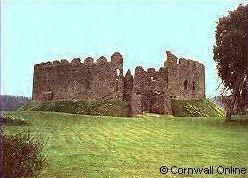 Restormel Castle
Restormel Castle
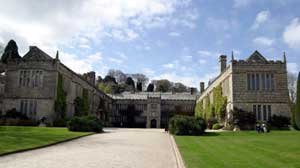 Lanhydrock House
Lanhydrock House
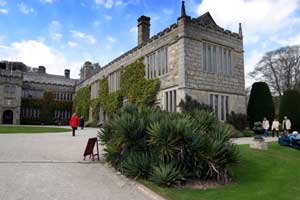 Lanhydrock House
Lanhydrock House
HOLIDAY RENTAL IN and AROUND LOSTWITHIEL
The Cornwall Online Guide - Holiday Rental propertiesSelf- catering Holiday Rental, Static Holiday Caravan Stays, Camping and Touring Pitches, Holiday Park vacation,
Holidays in Cornwall with the benefit of an onsite swimming pool - to help you enjoy your Holiday in Cornwall. Camping and Touring Parks nestled in the Cornish countryside, offering home from home comforts and accessible facilities, generous pitches, impressive site shops and warm welcomes.
Caravanning Camping and Touring in Cornwall has Limited Disabled Facilities, please call for details.
Facilities
Location: Cornwall
beach_access Nearest Beach: 0-1 mile
pets
Pets Welcome
local_parking
Parking Available
wifi
Internet Access
Sea
Views
En-Suite
Facilities
pool
Swimming Pool
Restaurant
Disabled Facilities- Please call to discuss your requirements - before booking !
Self- catering Holiday Rental,
Changeover Day = Fri
Prices from £410 to £750
A beautifully converted barn on the edge of a working farm. A short walk takes you down to the charming village of Polperro. Sleeps 4 + cot. Pets welcome
Pets are Welcome at The Little Barn - Polperro in Polperro -We are a Dog friendly establishment.
Facilities
Location: Polperro
beach_access Nearest Beach: 1-3 miles
credit_card
Credit/Debit Cards Accepted
pets
Pets Welcome
local_parking
Parking Available
En-Suite
Facilities
phone 01503 272083
Click
Here for more information about holidays at
The Little Barn - Polperro, Polperro
Self- catering Holiday Cottage Rental,
Changeover Day = variable
Prices from £450 to £1630
Fabulous and quiet, Tregrehan Garden Cottages lie within the stunning Cornish Estate since 1565 of the Carlyon family and one of the Great Gardens of Cornwall. Five holiday cottages are ideally located between Fowey and Charlestown, and under a mile from the beach and the Eden Project.
Open all year with high season prices from £520 to £1526 (sleeping 7)
Tregrehan Garden Cottages has Limited Disabled Facilities, please call 01726 812438 for details.
Pets are Welcome at Tregrehan Garden Cottages in St Austell -We are a Dog friendly establishment.
Facilities
Location: St Austell
beach_access Nearest Beach: 0-1 mile
Online Availability
credit_card
Credit/Debit Cards Accepted
pets
Pets Welcome
local_parking
Parking Available
wifi
Internet Access
En-Suite
Facilities
Disabled Facilities- Please call to discuss your requirements - before booking !
phone 01726 812438
Click
Here for more information about holidays at
Tregrehan Garden Cottages, St Austell
En-suite Bed & Breakfast Stays,
Rescorla Farm House is nestled in the peace of the countryside and commands stunning views- With ample on site parking Rescorla Farm is ideally located within walking distance of the Eden Project and short drives to local wineries; Fowey; The Lost Gardens of Heligan; Lanhydrock House and gardens; Bodmin Jail Museum and steam railway; Wheal Martyn China Clay Heritage Centre; Screech Owl Sanctuary; The Camel Trail (bike hire available); The Pine Lodge Gardens and Charlestown Shipwreck Heritage Centre.
Facilities
Location: St Austell
beach_access Nearest Beach: 3-10 miles
Online Availability
local_parking
Parking Available
wifi
Internet Access
En-Suite
Facilities
phone 01726 851669
Click
Here for more information about holidays at
Rescorla Farmhouse, St Austell
Cornwall Online | Looe| Talland Bay | Polperro | Polruan | Fowey | Lostwithiel | Mevagissey | Whitsandbay & The Rame Peninsula | Kingsand | Cawsand | Mount Edgecumbe Country Park | Torpoint | St Germans | Saltash | Liskeard | Siblyback Lake - Water Park | Minions - Bodmin Moor | St Neot | St Cleer | Callington | Gunnislake | Calstock | Cardinham Woods -Walking & Cycle Trails | Launceston | Plymouth
